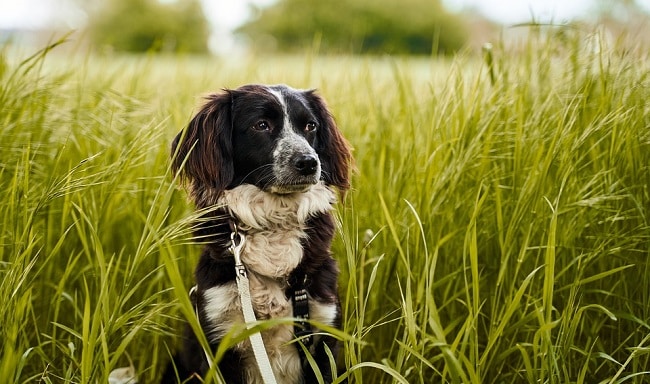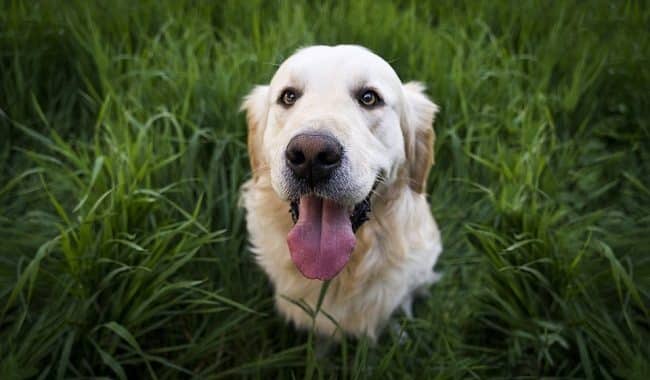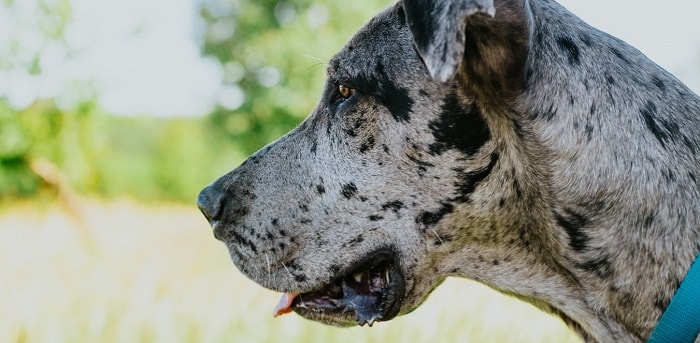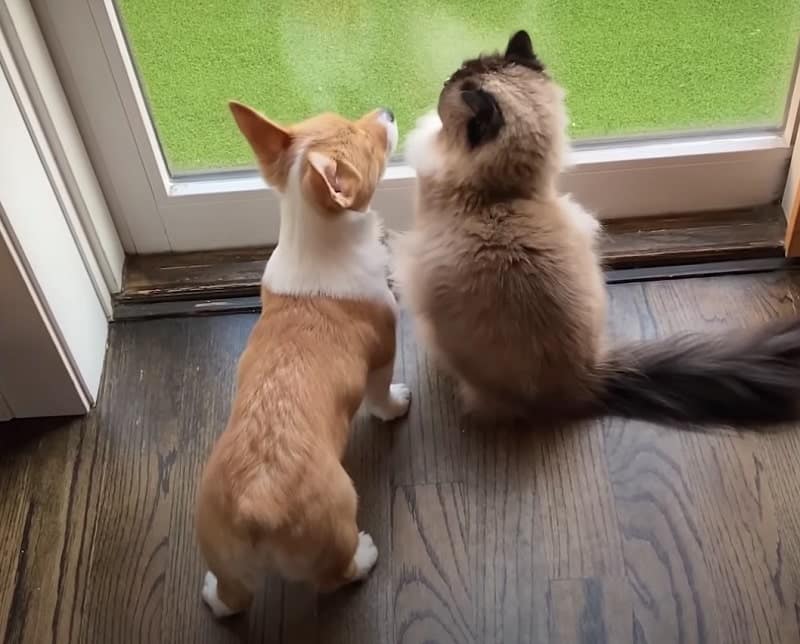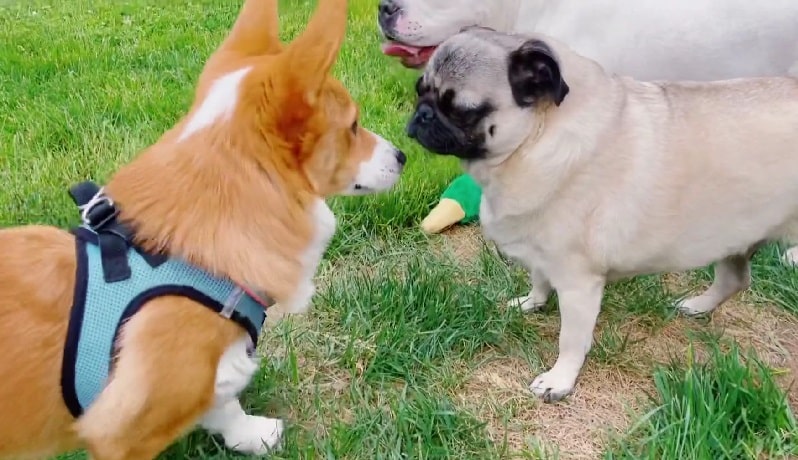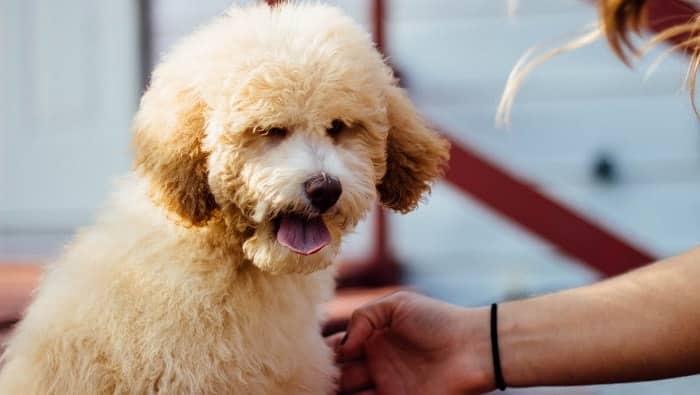During summertime, many dog owners notice that their pet begins to eat grass. Usually, all species of predatory animals in the wild periodically eat grass. The dog is also a predator, and such behavior is a common phenomenon.
There are a few reasons why a dog can “add” grass to the diet:
● to clean the stomach and bowel;
● to get vitamins and microelements;
● to facilitate the course of some disease;
● to get rid of helminths;
● just because it’s an instinct.
Let us see what is really true about this
Above all, dogs love wheatgrass. Practically, they do not chew it but swallow it whole. The rough and long wheatgrass leaves stimulate the stomach lining and intestines, causing their reduction. In the stomach, the grass, mixing with undigested food, forms a lump that the dog eructates.
It happens when, the food is not digested, and the putrefactive process begins in the stomach when foreign objects get into the stomach. With the help of grass, a dog cleans the stomach and removes excessive bile. Besides, a furry friend gets rid of constipation and congestion of food in the intestinal canal. So, if your pet feels discomfort in the stomach, he usually switches to a vegan diet. The fiber that is contained in plants also liquefies fecal masses and normalizes the animals’ stool.
As for the dog’s “self-treatment” with the help of grass, such cases are more common in rural conditions, where an animal can find all the necessary plants. Some types of herbs contain phytoncides that promote a healthy immune system and have antibacterial action.
The next assumption is that dogs eat grass if they want to get rid of worms. However, the grass is eaten by both healthy and worm-infected dogs, with the same appetite.
But the most doubtless fact is the instinctive eating of grass. The dog’s ancestors added grass to their diet, because it was not balanced enough, and the desire to eat green plants remained at the genetic level of dogs. They like the taste of greens being attracted by its young and juicy flavor.
The first thing to worry about is the frequency of chewing grass. You need to review your pet’s nutrition. If he started eating grass because of a lack of nutrients, it’s essential to switch to better and fiber-rich food. However, some researches detected that dogs eat greens regardless of their diet.
Perhaps, the most likely reason why dogs eat grass is that such activity brings them a lot of pleasure and fun.
What to do when a dog eats grass?
If grass eating is not accompanied by constant vomiting and apparent symptoms of a disease, do not interfere with the dog’s gastronomic addiction. The grass is a non-toxic product and does not cause any danger. A dog can smell which plant can be eaten and which one is not.
If a pet keeps an active lifestyle, does not lose the appetite and does not give up the natural salad, there is nothing to worry about. Such symptoms as diarrhea, refusal to eat, weight loss, hair loss, apathy can be a reason for visiting a vet.
What kind of grass is better?
There is no definite answer to this question. If the dog eats grass, make sure that the animal prefers safe and non-poisonous plants.
Vets usually recommend the following plants for your furry friend:
● cereal wild plants;
● wheat, rye, and sprouted oats;
● chamomile (relieves stomach inflammation and is effective for bowel spasms);
● carrot leaves, nettle, pot marigold, and lettuce.
It is desirable that the quality of these plants above has to be good. Also, in everyday life, dogs love mint, basil, parsley, dill, and sorrel. Greens for cats sold in the pet stores are also suitable for dogs.
Can a dog eat grass outside?
Keep in mind that through the greens, your pet can easily catch the infection. If the pet likes grass very much, a lot of vets recommend inoculating him.
It should be remembered that:
● grass near roads contains heavy metals and isn’t healthy for an animal;
● greens in the parks can be treated with different chemicals;
● helminths eggs may be found on the surface of plants.
If grass eating is already a habit for your tailed friend, it makes sense to plant lawn grass so that the dog can enjoy safe greens all summer. That’s why owners won’t have to worry about their pet’s health if he eats a lot of grass that grows outside. But this idea is possible only during a warm season.
In winter, a dog should not be deprived of this pleasure. You can, for example, buy the seeds of useful cereals in the pet store. It may be wheat, barley, or oats. Sow and plant them, and at any time of the year, you will have ecologically clean greens for your furry friend.
What if a dog eats grass?
To sum it up, you do not have to worry a lot if your dog enjoys eating grass. The main thing is to control what kind of grass your dog eats. It is important to keep him away from the planted fields, as they are usually treated with pesticides, herbicides, or any other artificial and harmful additives.
No matter what the real reason is for eating grass by pets, you can be sure that this process is the typical behavior of normal and healthy dogs.

